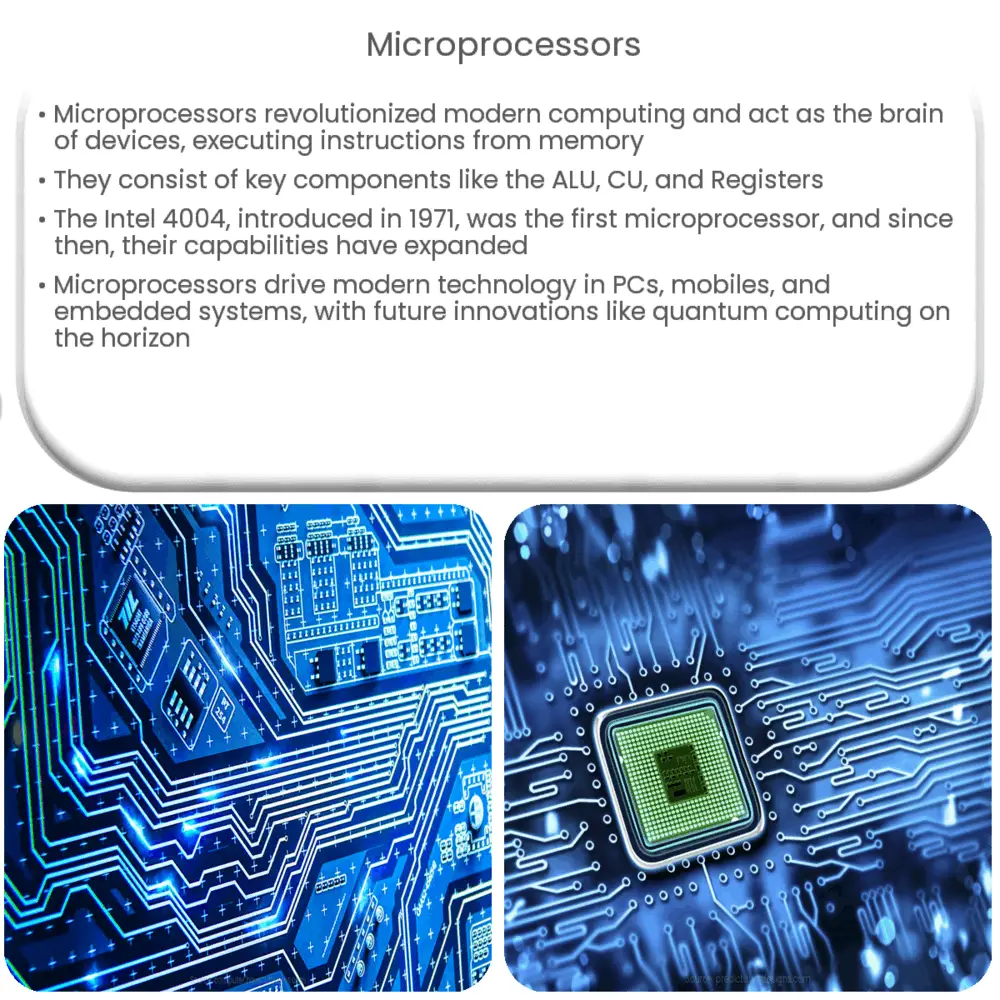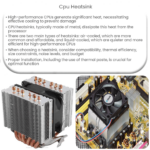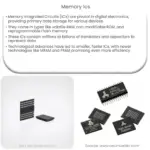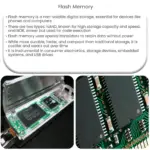Explore the history, workings, and future of microprocessors, the brains behind modern computing and digital technology.

Introduction to Microprocessors
The advent of the microprocessor in the late 20th century has undoubtedly revolutionized the technological world, paving the way for modern computing. A microprocessor is an integrated circuit that incorporates the functions of a central processing unit (CPU) of a computer on a single or a few microchips.
The key function of a microprocessor is to fetch, decode, and execute instructions from memory, performing all the arithmetic and logical operations. In essence, it is the brain of any computing device, from personal computers and smartphones to embedded systems.
Components and Functioning of Microprocessors
A microprocessor is composed of several functional units that work in tandem to perform complex operations. These units include:
- Arithmetic Logic Unit (ALU): This component performs all the mathematical and logical operations.
- Control Unit (CU): The CU controls and manages the various components of the computer. It interprets the instructions from memory and transforms them into a series of signals to the other components of the system.
- Registers: These are small storage areas within the CPU that hold data and instructions that are currently being processed.
These core components interact with the system’s memory and input/output (I/O) devices to form a complete computing system. The microprocessor fetches the instructions from the memory, decodes them in the control unit, executes the instructions with the ALU and registers, and stores the results back in memory.
The Evolution of Microprocessors
The first microprocessor, the Intel 4004, was introduced in 1971. Despite its limited abilities, it was a breakthrough technology. It was a 4-bit microprocessor, meaning it could process data and instructions that were 4 bits wide.
Since then, microprocessors have evolved dramatically, with a notable trend being the increase in bit width. The 8-bit microprocessors were followed by 16-bit, 32-bit, and currently 64-bit processors. This evolution has directly translated into increased computing power and speed.
Another significant evolution in microprocessor technology is the advent of multi-core processors. These processors contain two or more independent CPUs, known as ‘cores’, in a single processor chip. This design allows for increased performance and the ability to run multiple instructions simultaneously, known as parallel processing.
Architectures and Instruction Sets
Microprocessors can be classified based on their internal architecture and instruction set. The two major types of architectures are RISC (Reduced Instruction Set Computer) and CISC (Complex Instruction Set Computer). RISC-based microprocessors use a smaller set of simple instructions, enabling faster execution. On the other hand, CISC-based microprocessors can perform complex operations using a single instruction, reducing the overall number of instructions required.
Each microprocessor comes with a specific instruction set, which is a group of commands that the microprocessor is designed to execute. The most common instruction sets include x86, used by Intel and AMD, and ARM, used primarily in mobile devices due to its power efficiency.
Microprocessors in Modern Technology
Microprocessors have permeated every facet of modern technology. They are the heart of personal computers, servers, and supercomputers. In mobile technology, microprocessors have facilitated the development of smartphones, tablets, and smartwatches. They are also integral to embedded systems, which are special-purpose computer systems designed to perform one or a few dedicated functions, often found in home appliances, cars, medical equipment, and industrial machines.
The Future of Microprocessors
The future of microprocessors looks promising, with several innovative trends on the horizon. The move towards smaller and more efficient designs is an ongoing trend, driven by the need for more powerful and energy-efficient devices. Quantum computing, which uses quantum bits or ‘qubits’ instead of binary bits, is another frontier that could revolutionize the microprocessor industry.
Conclusion
In conclusion, microprocessors have come a long way since their inception in the 1970s. They have revolutionized computing, paving the way for a multitude of technological advancements and conveniences that we enjoy today. The evolution of microprocessors has been a testament to human ingenuity and the relentless pursuit of technological progress. As we move forward, these tiny yet powerful chips will continue to shape the future, heralding new eras of digital innovation.




